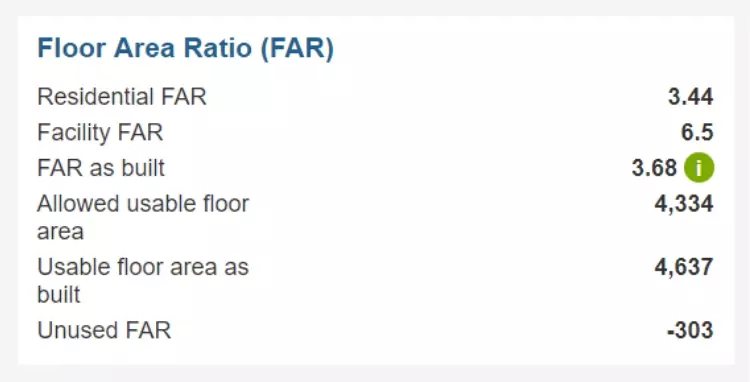FAR is an important concept for anyone interested in understanding how urban planning can impact a particular area. It is used to limit the size of a building in relation to the area of land it is situated on. While it may seem complex, understanding FAR is crucial.
The Purpose of FAR
FAR aims to restrict the size of a building in proportion to the land it occupies. To calculate FAR, you take the total floor area of a building and divide it by the total land area. It's important to note that the figures used should be the floor area and total land area - not just the floor area or land area currently in use.
FAR includes 100% of a building's floor area - not just the footprint of the building. Buildings with different numbers of floors can have the same FAR value. For example, a single-story building with a floor area of 1,000 square feet on a land area of 4,000 square feet will have an FAR value of 0.25. A two-story building on the same land area, with each floor having an area of 500 square feet, will also have an FAR value of 0.25.
 Illustration of FAR
Illustration of FAR
FAR greatly influences real estate developers
Properties with lower FAR limitations are less attractive to developers. The real estate industry, in general, sees higher FAR as an opportunity to create more space and complete projects more efficiently. Higher FAR allows for the construction of larger buildings, increases sales and rental revenues, and reduces costs per project. It also makes it easier for developers to meet the growing demand for new real estate.
Local governments sometimes set maximum FAR limits for individual plots
The frequency with which local governments set maximum FAR limits for individual plots depends on the area in which the property is located. For instance, in a city like New York, FAR is assigned to each plot of land. In rural areas of Ohio, there may never be any FAR limitations.
If a building exceeds the maximum allowed FAR, it largely depends on the timing of the property's construction. If the property was built before the FAR limit was imposed, the building is grandfathered in, and the owner is not required to take any action to comply with current standards. However, they cannot further develop the property.
However, if the FAR value of a property exceeds the maximum limit and it was built after the limits were put in place, measures need to be taken. The owner may be required to reduce the floor area of the property, and if that is not feasible, they may have to remove a portion of the structure.
FAR can be as important as height restrictions
In areas like New York City, buyers may be concerned about height restrictions. They may want to see more high-rise buildings or preserve the character of the neighborhood. However, FAR limitations can be just as important. For example, a commercial center that exceeds the maximum FAR of the plot may not provide adequate parking space for customers.
While FAR limitations generally pose fewer challenges for developers in residential areas, urban development regulations still apply. Additionally, homeowners' association rules may also impose FAR limitations that are even more restrictive than local building regulations, aiming to preserve the initial allure of the community.
The complex effects of FAR on land value
FAR can increase or decrease the value of land. For instance, a property with a higher FAR can be more valuable because it allows for the construction of a larger building with more units, larger units, or both. However, this can also decrease the value of the land next to it as it may obstruct the views.
The FAR value of a property can be a deciding factor for investors. If the FAR of a building is lower than the maximum allowed, it means there is an opportunity to upgrade and expand the existing property or construct additional structures on the land.











